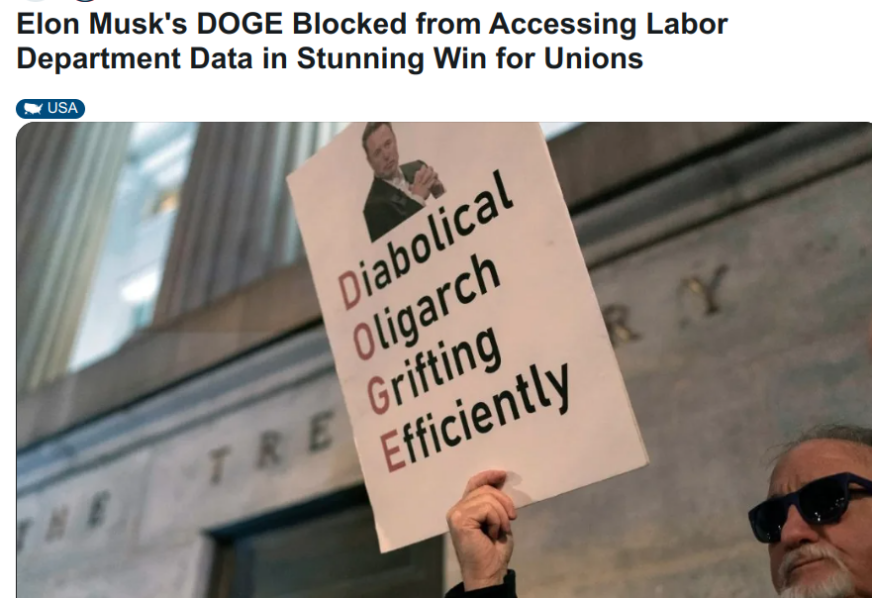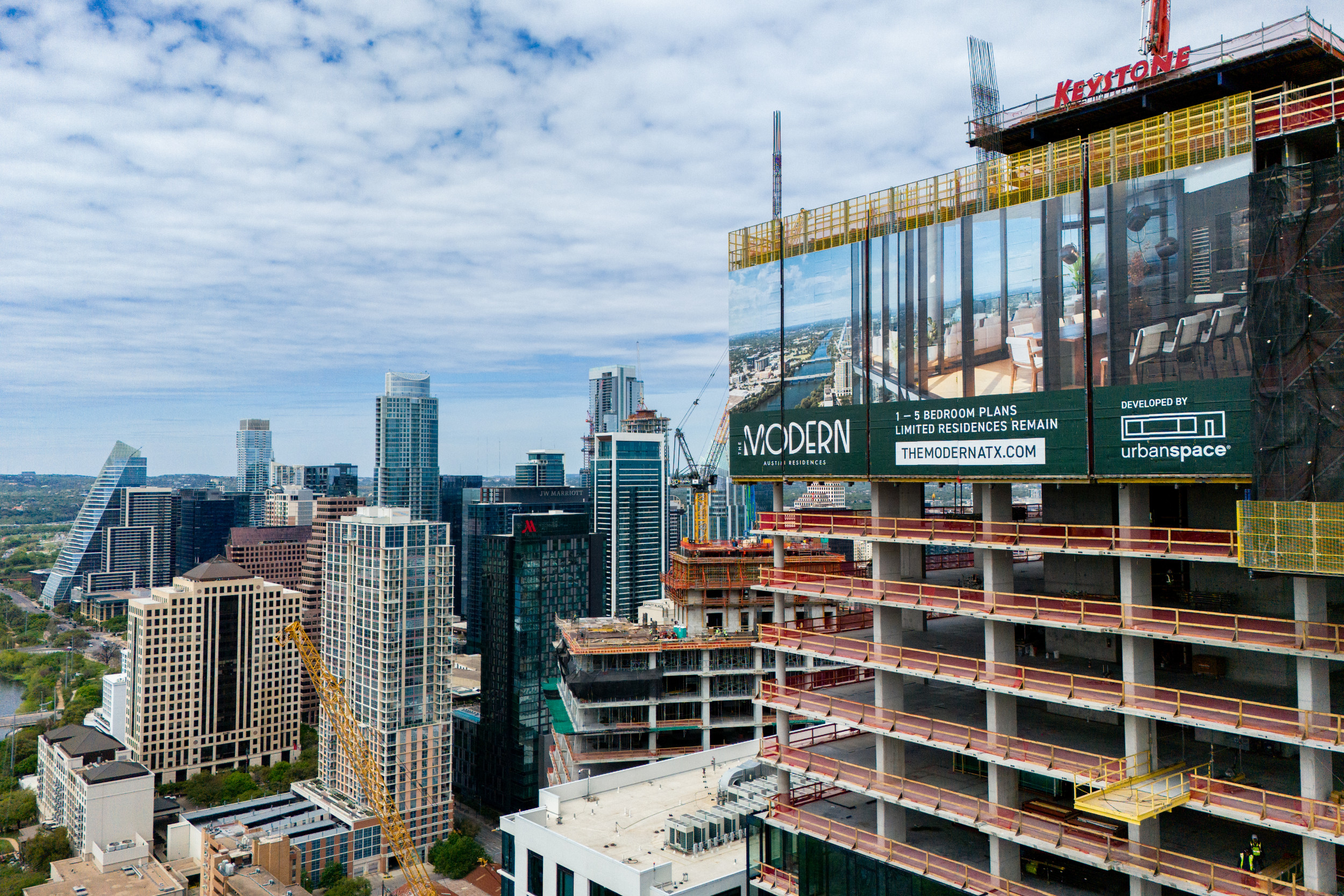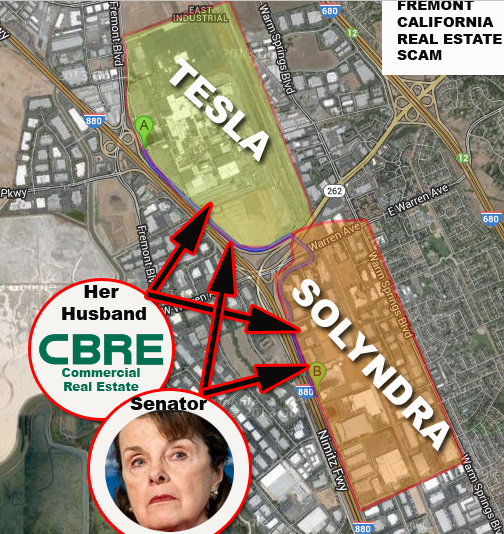With Elon Musk watching, Trump says he’s giving DOGE even more power

Donald Trump’s Pledge to Lower Costs on ‘Day One’ is Unravelling

President Donald Trump said Tuesday he was signing an executive order to give tech billionaire Elon Musk more power over the federal workforce, adding to Musk’s swift and sweeping consolidation of political influence.
With Musk standing to his right in the Oval Office, Trump praised the work of his office, known as the Department of Government Efficiency Service (DOGE). And Trump said he wanted Musk to now do more, even as DOGE faces multiple lawsuits from labor unions and Democratic state attorneys general over whether it is acting within the law.
The new executive order directs federal agencies to “coordinate and consult” with DOGE to cut jobs and limit hiring, according to a summary provided by the White House. Each agency will be ordered to “undertake plans for large-scale reductions in force” and limit hiring to only “essential positions,” the summary says.
Musk, the CEO of Tesla and SpaceX and the wealthiest person in the world, is wielding federal authority without giving up his private-sector jobs while also serving as a “special government employee.” It is a temporary position that bypasses some of the disclosure obligations required of full-time government employees.
He wore an all-black “Make America Great Again” hat and had one of his 11 children underfoot for the briefing.
Trump and Musk took questions from reporters in a freewheeling exchange for more than half an hour, but the two spoke mostly in generalities and did not give details about the alleged fraud they said DOGE had found.
For weeks, Musk has railed against what he says is waste, fraud or abuse that DOGE has identified, although many of the examples he has posted about on social media lack specifics. On Monday, the DOGE account on X said the administration had terminated 89 contracts worth $881 million, but it did not say what they were or why they counted as waste.
In other instances, independent fact-checkers have cast doubt on Musk’s examples of alleged waste. His claim that the United States spent $50 million on condoms for the Gaza Strip was widely criticized for lacking evidence.
Asked by a reporter about the condom fact-checks, Musk acknowledged that some of what he has said about alleged waste in the government has turned out to be false.
“Nobody’s going to bat a thousand,” Musk said. (Earlier in the day, Musk had been posting phallic jokes on X.)
Musk also said he had worked with Secretary of State Marco Rubio to “turn on funding” for Ebola and HIV prevention, making them exceptions to his attempt at an overall spending freeze. He said pausing that funding had been a “mistake.”
“We will make mistakes, but we also fix the mistakes very quickly,” he said.
The two said little to calm concerns that they were violating the Constitution, including by trying to shutter federal agencies without the approval of Congress and refusing to spend money that Congress had appropriated. Among DOGE’s targets for elimination are the U.S. Agency for International Development, the Consumer Financial Protection Bureau and the Education Department.

In response to a reporter’s question, Musk said it was not a conflict of interest for him to intervene in the operations of the Defense Department, for which SpaceX is a major contractor. He said he delegates the relevant work at SpaceX.“First of all, I’m not the one filing the contract. It’s people at SpaceX,” he said. And he added: “If you see any contract where the where it was awarded to SpaceX and it wasn’t by far the best value for money for the taxpayer, let me know, because every one of them was.”
SpaceX had $3.8 billion in federal contracts last year, according to government data.
Trump brushed aside a reporter’s question about whether he would eventually need congressional approval to cut spending.
“I really don’t know,” he said. “If I need a vote of Congress to find fraud and abuse, it’s fine with me. I think we’ll get the vote.”
Trump also attacked a federal judge in New York who granted a temporary restraining order Saturday related to DOGE’s activity in the Treasury Department. He called the judge an “activist.”
But he said in response to a later question that he would abide by any adverse court rulings.
“I always abide by the courts — always abide by them — and will appeal,” he said.
In the three weeks since Trump took office, plaintiffs have filed 52 lawsuits over his executive orders and other administrative actions, including DOGE’s activity, according to a database maintained by Just Security, a legal publication based at New York University.
The image of Trump and Musk taking questions side-by-side appeared to put to rest any doubts over whether Musk had Trump’s support for his expansive overhaul proposals. And the latest executive order appeared to be aimed at expanding the scope of Musk’s influence.
Trump did not sign the DOGE-related executive order in the presence of reporters, but the White House said later that he had signed it.
There are about 2.4 million federal employees, excluding postal workers, according to the Pew Research Center. The number has grown by a little over 1% per year since 2000, but as a share of all civilian employment it has changed little, Pew said in a report last month.
Even if DOGE succeeds at cutting the federal workforce by a substantial number, their compensation makes up a small percentage of the overall budget — about 6.6%, according to the Brookings Institution. The vast majority of federal spending goes toward Social Security; health care for the elderly, disabled and poor; the military; and interest on the national debt, the Congressional Budget Office says.
Musk and Trump mentioned the words “waste,” “fraud” or “abuse” dozens of times in the 30-plus minutes they spoke with reporters, but details were few and far between. Trump said an unspecified man had been given a federal contract for three months but was paid for 20 years, a story for which he provided no evidence. The White House did not immediately respond to a request for more information.
Several long-standing government offices were already devoted to finding waste, fraud and abuse before DOGE was created. They include the Government Accountability Office and the inspectors general for individual departments.
Musk said that DOGE has been looking into the net worth of some federal employees and that he considered a high net worth a sign of potential fraud for a government worker.
“There are quite a few people in the bureaucracy who have ostensibly a salary of a few hundred thousand dollars but somehow managed to accrue tens of millions of dollars in net worth,” he said. “We’re just curious as to where it came from.”
Musk did not say how DOGE had acquired data about federal employees’ net worth, and White House spokespeople did not immediately respond to a request for more information about his comments.
‘Anxiety provoking’: Government workers describe their DOGE interviews
DOGE’s probe of the General Services Administration resembles the Silicon Valley business philosophy that has penetrated efforts to overhaul the federal workforce.
Elon Musk’s Department of Government Efficiency agents have swarmed the government looking to size up worker productivity — and federal staffers who have chatted with the tech billionaire’s lieutenants fear jobs that aren’t compatible with a Silicon Valley work style are on the line.
Three General Services Administration employees — all of whom spoke to POLITICO anonymously out of fears of retribution — described their and their subordinates’ recent interviews with Musk’s DOGE agents as potentially career-ending, with federal employees feeling like every word they’re saying could be grounds for future dismissal. The behind-the-scenes agency handles the federal government’s real estate, software and logistics — so Musk and his team’s efforts to trim GSA could have a domino effect across the government.
“The interviews are anxiety provoking,” said a GSA supervisor whose employees were recently interviewed by a DOGE worker. The tension swells the moment a worker receives a calendar invite from a Gmail account, they said, “frequently with almost no notice and often scheduled over existing client meetings.”
Another GSA employee, a project manager, described his DOGE interview as a whirlwind.
The DOGE agent identified himself as an “adviser” to Thomas Shedd, a former Tesla engineer who became the director of the GSA’s technology servicing sub-agency called the Technology Transformation Services in January. The project manager said the conversation with the DOGE employee was a brief, 15-minute interview with little attention paid to any experience on moving complete projects through the federal government.
“Most people are trying to hype their technical skills,” the project manager said. “They don’t think DOGE people respect the softer ‘moving complex projects through government bureaucracy’ types of skills.”
The project manager said they fear that, based on the brief interaction, their job is on the line. That’s because project managers in the federal government act as middlemen “to get buy-in from senior leadership about tech things they might know nothing about,” they said, while those in tech can directly handle software and hardware projects.
Doing away with traditional government project managers could remove a layer of bureaucracy Musk said stifled innovation.
The manager added that they “can’t be certain” they said the right things to save their job.
The flurry of interviews that rocked GSA and other federal agencies in the past weeks underscore Musk’s infusion of the intense Silicon Valley culture that built his tech empire into the federal government, the GSA staffers said. Either you were a loyalist fully committed to the new mission, or you were seen as expendable.
The series of internal interviews is a part of President Donald Trump and Musk’s crusade to modernize the federal government and cut the $6.1 trillion federal budget by a third. The Trump administration and GSA, under newly appointed acting administrator and software entrepreneur Stephen Ehikian, have made their vision for the agency clear: GSA should slash its budget in half by cleaving contracts and personnel, according to notifications staff received earlier this month.
According to the three GSA staffers, DOGE enforcers did not specify what would happen next. Two other staffers said they had not been interviewed, but DOGE lieutenants are still conducting formal one-on-one discussions.
White House DOGE adviser Katie Miller did not respond to multiple requests for comment on the interview process, nor did a spokesperson for GSA.
GSA is a particularly ripe target for budget cuts because most of its funds come from product and servicing contracts, not Congress. This means DOGE can make cuts while trying to skirt legal questions about whether it can actually slash funds already approved by Congress and former President Joe Biden.
GSA provides other federal agencies with real estate management, policy standardization and technical services. A diminished GSA could strain the federal government by offloading these tasks onto inexperienced workers in other hollowed-out agencies, staffers said.
“It is a strange place to start when you say you care about government technology modernizing,” said a GSA data scientist who was interviewed by DOGE, though they conceded there was some redundancy in the agency.
The meetings, which some said took place the same day they were scheduled, were framed as a way to assess a team’s strengths and weaknesses, the staffers said. “But the tenor of it clearly also suggests it has to do with ranking people and figuring out who to cut, especially since it started with probationers,” the supervisor said.
The DOGE crew’s questions led GSA staffers to believe the group was looking to cull employees who lacked technical skills or added bureaucratic layers to government operations, which some techies like Musk have sought to eliminate for rapid, unregulated innovation.
Those staffers who spoke with POLITICO believe DOGE may keep engineers and others who ship code, including web designers. Most other jobs, they continued, are probably on the chopping block.
GSA and DOGE’s vision for the agency now includes artificial intelligence projects that hint at “a Silicon Valley mental model of ‘pour all the data into a [large learning model] and then replace all the jobs with AI,” said the supervisor, who was familiar with the deliberations. GSA and DOGE are developing a chatbot called GSAi to increase worker productivity and have proposed other AI tools to scrub contracts for redundancies and streamline processes, two staffers said.
If Musk’s history in Silicon Valley is of any indication, the federal government under his watch will likely follow through on these cuts. After he purchased Twitter in 2022, Musk sent employees an email titled “Fork in the Road” and warned they should brace for lengthy work hours or resign. Federal staffers received an email with the same subject line from the Office of Personnel Management on Jan. 28, in which the agency offered them “buyouts” with pay and benefits through Sept. 30.
Musk has since laid off about 80 percent of Twitter’s original workforce for his rebranded site X. Trump and others in his circle have since weighed possible mass layoffs if too few employees quit, officials told CNN. And GSA officials corroborated similar messaging to staffers, according to internal memos obtained by POLITICO.
But the Silicon Valley hack-and-slash playbook isn’t in line with an organization focused on providing a public service, the data scientist said.
That’s because haphazard cuts that cause service outages — even relatively brief ones — could be disastrous for the millions of Americans who use GSA services without even knowing it. The agency operates Login.gov, the central login system for Medicare, Medicaid, Social Security and other public assistance lifelines. “We’re not talking about saving money here. We’re talking about saving people’s lives and providing services people cannot go without,” the data scientist said.
Sweeping cuts are “not something you can do when you run a system people access every single day,” they continued. “You need up-time of 99.999 percent.”
Tesla is suing drivers who complain about their cars after accidents – and winning
Tesla owner Elon Musk is a self-described ‘free speech absolutist’
Zhang Yazhou was sitting in the passenger seat of her Tesla Model 3 when she said she heard her father’s panicked voice: The brakes don’t work! Approaching a red light, her father swerved around two cars before plowing into an SUV and a sedan and crashing into a large concrete barrier.
Stunned, Zhang gazed at the deflating airbag in front of her. She could never have imagined what was to come: Tesla sued her for defamation for complaining publicly about the car’s brakes — and won.
A Chinese court ordered Zhang to pay more than $23,000 in damages and publicly apologize to the $1.1 trillion company.
Zhang is not the only one to find herself in the crosshairs of Tesla, which is led by Elon Musk, among the richest men in the world and a self-described “free speech absolutist.” Over the last four years, Tesla has sued at least six car owners in China who had sudden vehicle malfunctions, quality complaints or accidents they claimed were caused by mechanical failures.
The company has also sued at least six bloggers and two Chinese media outlets that wrote critically about the company, according to a review of public court documents and Chinese media reports by The Associated Press. Tesla won all eleven cases for which AP could determine the verdicts. Two judgments, including Zhang’s, are on appeal. One case was settled out of court.
It is not common practice for automakers — in China or elsewhere — to sue their customers. But Tesla has pioneered an aggressive legal strategy and leveraged the patronage of powerful leaders in China’s ruling Communist Party to silence critics, reap financial rewards and limit its accountability.
The AP review of Tesla’s record in China comes as Musk is wielding significant influence in President Donald J. Trump’s new administration, leading an effort to rapidly shrink the size of the federal government and oust employees deemed disloyal to the president. His actions have raised concerns that Musk is weakening the U.S. system of checks and balances, in part, to benefit Tesla and his other companies.
In the United States, Elon Musk has found a powerful ally in Trump. Together, they have ransacked the federal government, freezing spending, suspending programs and dismissing prosecutors, government watchdogs and others that have traditionally acted as guardrails.
Tesla officials in China and the United States did not reply to requests for comment.
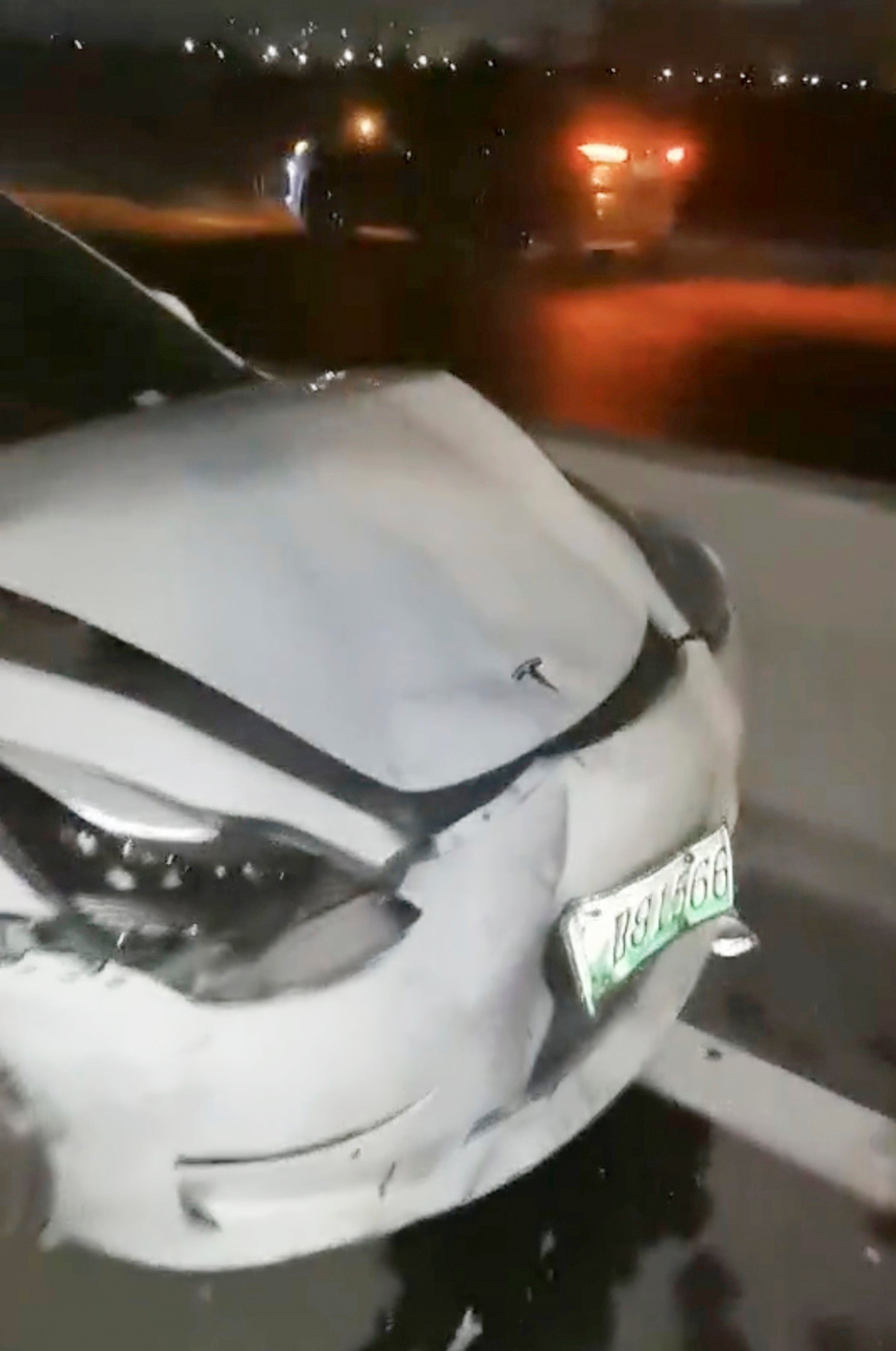
Tesla’s record in China shows how Musk has thrived in a system in which regulators, the media and the courts — which must all ultimately answer to the ruling Communist Party — are, by design, somewhat intertwined.
Tesla has profited from the largesse of the Chinese state, winning unprecedented regulatory benefits, below-market rate loans and large tax breaks. With a few pointed exceptions, Tesla has enjoyed largely ingratiating coverage in the Chinese press, and journalists told AP they have been instructed to avoid negative coverage of the automaker.
Tesla’s windfall has extended to the courts — and not just in legal actions Tesla has brought against customers. In a review of public court documents, the Associated Press found that Tesla won nearly 90% of civil cases over safety, quality or contract disputes brought by customers.
“The government gave Tesla a super status that put consumers in a very vulnerable position,” said Qiao Yudong, a former lawyer for American sports car company Saleen Automotive in China. “That’s why some consumers had to resort to extreme actions.”
One of those desperate customers was Zhang.
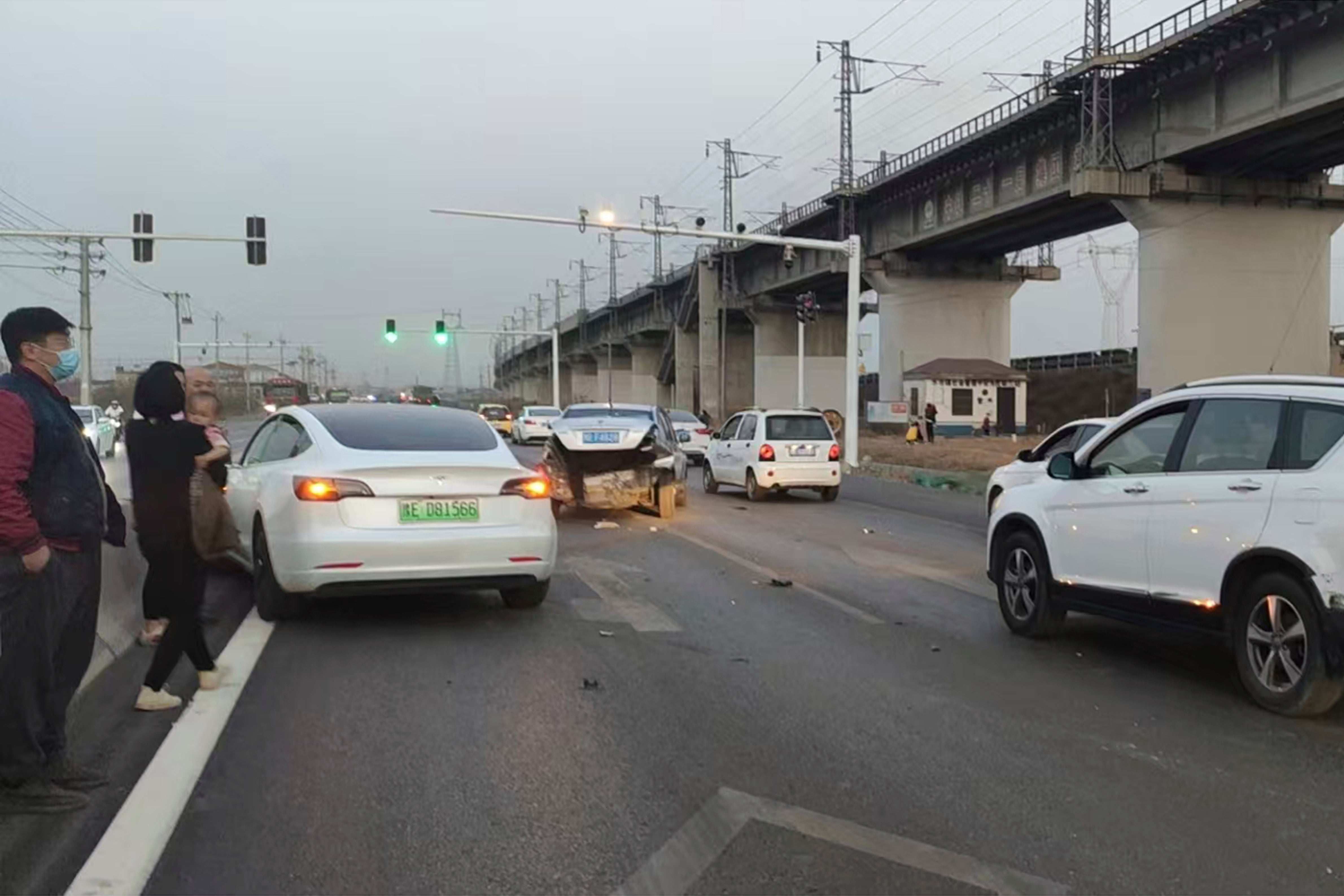
The February 2021 crash in central China’s Henan province sent Zhang’s mother and father, who had a concussion, to the hospital for four days, medical records show. Zhang — who was unharmed in the accident, as was her baby niece — wanted to understand what had happened: How could her dream car have turned into such a nightmare?
Traffic police determined that the crash was her dad’s fault because he hadn’t maintained a safe following distance. Zhang, however, insisted that the brakes had malfunctioned, sending the car out of control. She filed a complaint with a local market regulator, requesting a refund and compensation. Teslas are among the most computerized cars on the market, so Zhang asked the automaker to turn over the full pre-crash data from her car, hoping it might help explain what went wrong. Tesla refused.
“Tesla’s employees were very arrogant and tough in dealing with my complaints,” Zhang said in an interview. “I was burning with anger.”
After weeks of stewing, she draped her damaged car with a banner proclaiming “Tesla brake failure” in front of the Tesla dealership in Zhengzhou, the capital of Henan province, some 200 km (124 miles) from her home. She sat on the Tesla’s roof and blared her protest through a bullhorn: “Tesla Model 3 brakes failed,” she said. “A family of four almost died.” The next month, she parked her damaged car outside an auto show in Zhengzhou. It was all to no avail — Tesla refused to turn over the full data and mediation went nowhere.
Figuring that top Tesla officials would attend an April auto show in Shanghai, she and a friend — who had also had a problem with her Tesla — donned matching T-shirts with the phrase “Brakes fail” and headed for Tesla’s booth, determined to buttonhole executives. The automaker’s officials avoided them, Zhang said, and they couldn’t get anyone to hear them out.
Her friend, who was six months pregnant, started shouting, “Tesla brakes fail!”
Zhang clambered on top of a shiny red display model and started hollering, too.
“Things escalated,” said Zhang.
The moment — captured on cell phone videos shot by onlookers — went viral on Chinese social media. Burly security guards hauled Zhang out, and she was detained for five days.
Some observers speculated that Zhang’s protest had been orchestrated — perhaps by a competitor or by the Chinese government itself to pressure Tesla to conform with Chinese regulations. Tesla alleged that Zhang hadn’t acted on her own. A top executive speculated to Chinese media that she “had someone behind her” and said Zhang was making a fuss because she just wanted higher compensation.
Zhang insisted she acted on her own — and out of anguish. Outraged, she sued Tesla for defamation, arguing that the executive’s comments unjustly cast her as a troublemaker to deflect attention from the company’s own shortcomings.
And then she found herself on the receiving end of a lawsuit filed by Tesla.
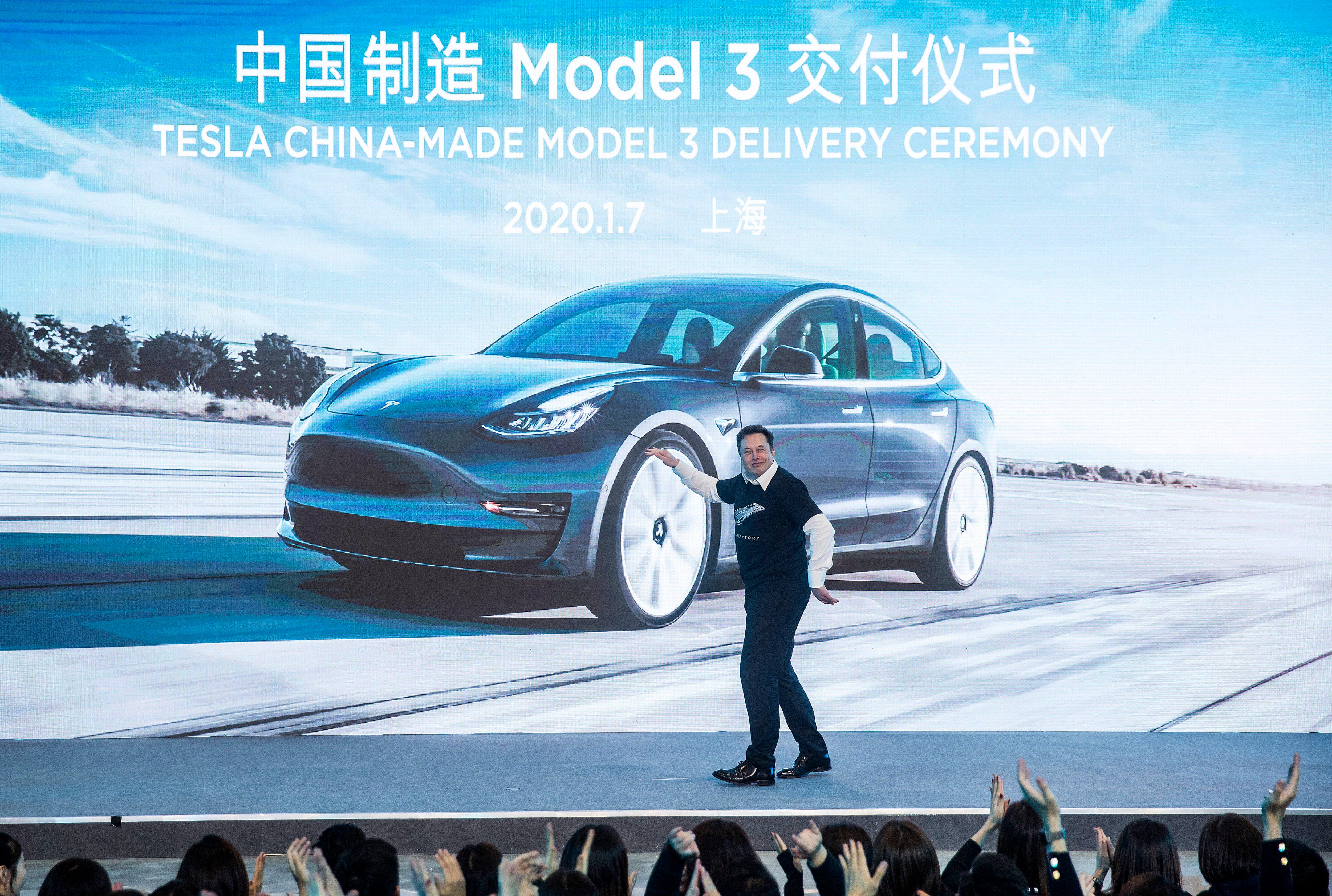
Tesla said Zhang had deliberately spread false information that damaged the brand and asked for 5 million yuan ($684,000) in damages.
The case, which a court took up in October 2021, came as Tesla faced a barrage of criticism in China.
Dozens of Tesla owners had been publicly complaining about alleged brake failures, battery fires, unintended acceleration and other defects, as well as what they claimed were misleading sales practices. The same month as Zhang’s crash, Chinese regulators summoned Tesla to respond to quality concerns raised by such reports.
Zhang’s emotional protest sparked a rare burst of criticism of Tesla in Chinese media. Under pressure from regulators, Tesla finally released the data from her car, which the company said showed her father had been driving nearly 120 km per hour (75 mph) and that the brakes had functioned to reduce the magnitude of the collision.
Tesla had finally given Zhang what she’d been asking for, but they’d published the data publicly and included her vehicle identification number. She said she and her family started getting threatened and doxed online. Besides, she wondered, how could she be sure Tesla hadn’t modified or redacted the data from her car? It was less than the victory she’d hoped for. Feeling besieged, she sued Tesla a second time, in March 2022, for invading her privacy.
Zhang lost both cases she brought against Tesla.
Meanwhile, the defamation case against her was grinding along. Back in court as a defendant, Zhang was unable to prove that the brakes on her Tesla had indeed failed. In a closed trial, a Shanghai court ruled in May 2024 that Zhang’s public complaints went beyond what magistrates considered reasonable, factual criticism and ordered her to publicly apologize and pay 170,000 RMB ($23,000) to cover damages and the legal costs of the world’s most valuable car company.
Zhang appealed the ruling. She maintains that her lawsuit is a cry for transparency and accountability and that a company as rich and powerful as Tesla should be able to tolerate legitimate criticism from its customers.
“I refuse to accept it,” Zhang told the Associated Press, “As a consumer, even if I said something wrong, I have the right to comment and criticize. I spoke about my feelings as a user of the car. It has nothing to do with damaging their reputation.”
Her odds of winning the appeal against Tesla do not look good. Tesla has not only won the defamation cases it brought against unhappy car owners and critical journalists, it’s also prevailed in lawsuits customers have filed against it.
An AP review of a Chinese government database of court filings published online found 81 civil judgements in which car owners sued Tesla over safety and quality issues or contract disputes. Car owners won in only nine of those cases.
In a statement to AP, the Shanghai High People’s Court said that judgments are the result of a “fair trial” based on “the objective facts of the case”.
“It cannot be assumed that the party has received ‘special protection’ or ‘special treatment’ because of their victory,” the Court wrote.
While some auto industry experts in China say it’s generally difficult for customers to win cases against car companies, others say it’s remarkable for a foreign company to enjoy such blazing success in Chinese courts.
“For Tesla to win that percentage of the time is an anomaly,” said Bill Russo, founder of Automobility Ltd., an advisory firm based in Shanghai, who also used to be regional head of Chrysler in Northeast Asia. “The odds are stacked against you. It’s like going to the casino and winning every hand.”
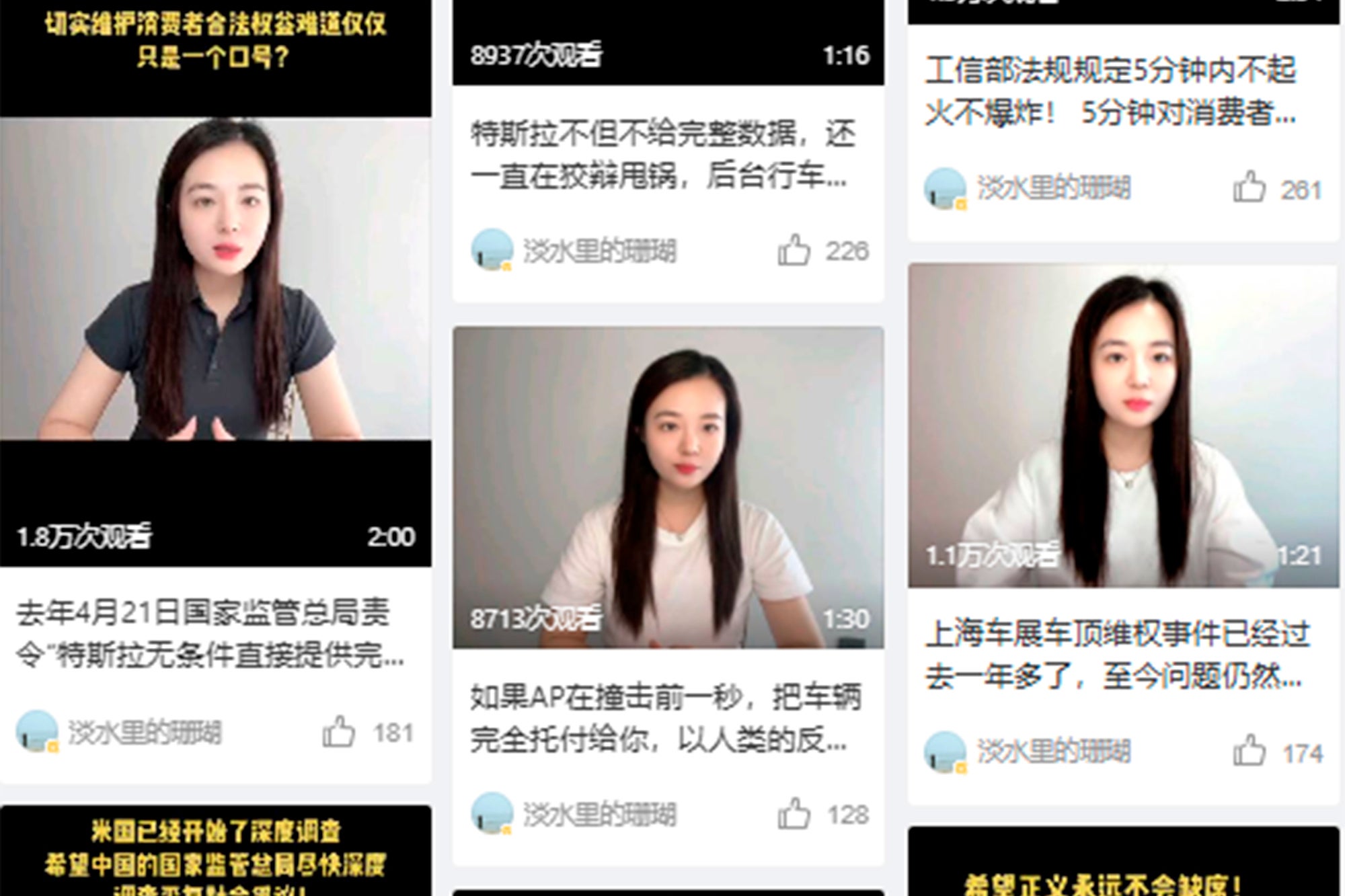
Tesla’s commercial and political success in China has hinged on the support of a powerful patron: Li Qiang, the former party boss of Shanghai who is now China’s premier, second in rank only to President Xi Jinping. It was under his watch, in 2019, that Tesla built its first overseas factory on the outskirts of China’s financial capital.
With Li’s support, Tesla became the first foreign automaker allowed to retain complete control over its China venture and got low-interest loans and generous tax breaks. China also adopted an emissions credit scheme modeled after a U.S. program that has generated billions in income for Tesla.
In January 2020, one year after breaking ground, Elon Musk unveiled the first Chinese-made Teslas on a stage in Shanghai. Tesla turned an annual profit for the first time in its history that year, and Musk was declared the world’s richest person in January 2021.
China got what it wanted, too: Tesla was a potent catalyst for domestic production and consumption. Before Tesla’s arrival, new energy vehicles accounted for around five percent of China’s auto market. Today, analysts say, more than half of passenger vehicles sold retail in China are powered by an electric motor. Chinese battery maker CATL, a key Tesla supplier, has embedded itself in global supply chains to become the world’s largest EV-battery maker. China’s BYD is now the world’s largest electric vehicle manufacturer and a growing competitive threat to legacy carmakers in the West.
“Tesla had a large part to play in that,” said Tu Le, the managing director of Sino Auto Insights, a consulting firm. Tu said the way the government smoothed the way for Musk’s factory was critical. “It was a swampy field on the outskirts of Shanghai. A year later they’re rolling cars off the line,” he said. “I don’t know if that happens anywhere else in the world.”
Requests for comment to the State Council, which is run by Li Qiang and oversees China’s government ministries, went unanswered.
Musk still swings by to meet Li when he goes to China. Their encounters underscore the complexity of Musk’s overlapping interests as a businessman and the most China-friendly member of President Donald Trump’s inner circle.
Musk’s “greater objective was winning influence over the people that mattered for him, that enabled him to get things done,” said Russo, the auto strategist in Shanghai. “He’s done a good job of it in China and he’s done it now with the influence he purchased with his relationship with Trump.”
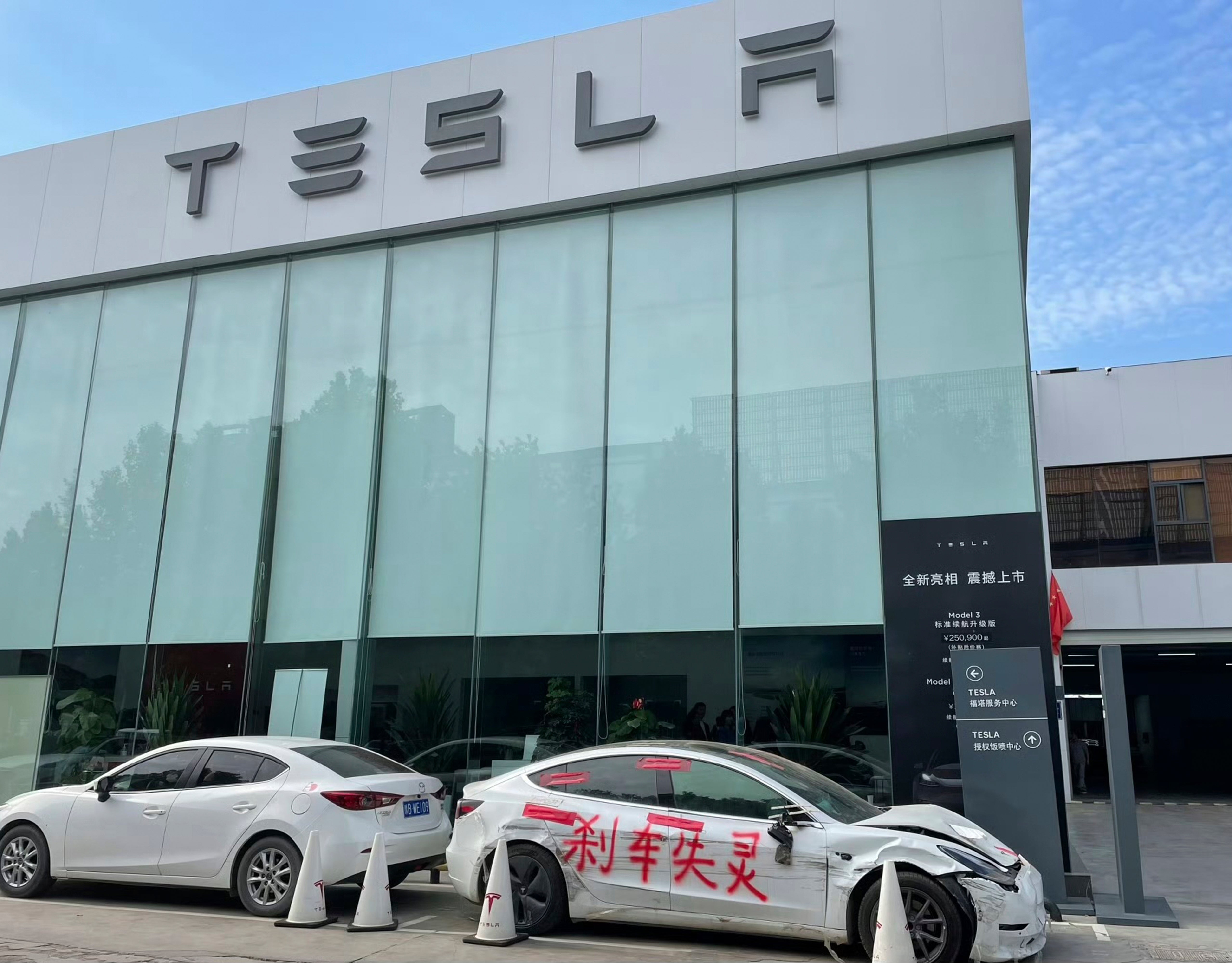
Safety advocates worry about the implications of Musk’s proximity to power in the United States. Federal investigations and safety initiatives Musk has long railed against could be easily snuffed out by the new administration.
In the U.S., Tesla also has been subject to a raft of customer safety complaints and lawsuits over autopilot function, battery charging, alleged suspension defects, sudden braking or acceleration, faulty airbags and allegedly monopolistic practices on repairs and parts. Judges have dismissed some cases. In others, Tesla settled out of court or paid hefty settlements.
Tesla has not publicly sued any of its U.S. customers for speaking out, though in January Musk said on X that “maybe it is time” to sue media outlets for coverage that could stain Tesla’s brand. His post has been viewed more than 22 million times.
Tesla has already successfully done that in China.
Two Chinese journalists based in Shanghai told AP there is an unwritten rule to avoid critical coverage of Tesla. Both spoke on condition of anonymity, fearing retaliation.
“We were told by our editor that we should not write negatively about Tesla because it is a key company that was introduced and protected by the Shanghai government,” a tech reporter told AP.
Those who have strayed have found themselves in court. Musk’s company sued media outlets PingWest and ifeng.com over negative coverage. It was unhappy about PingWest’s report that claimed Tesla’s Shanghai factory was a “sweatshop.” The news website ifeng.com drew Tesla’s ire over a story that explored the tribulations of car owners who fought Tesla. PingWest had to apologize and pay Tesla 100,000 yuan ($13,700). AP could not determine the outcome of the case against ifeng.com.
Tesla is not the only company in its industry to sue its critics. BYD has also aggressively pursued media in court, including an unsuccessful lawsuit against Vice Media in the United States. More recently, electric vehicle makers Nio and Li Auto have stepped up defamation cases against bloggers in China who allegedly spread false information about their companies.
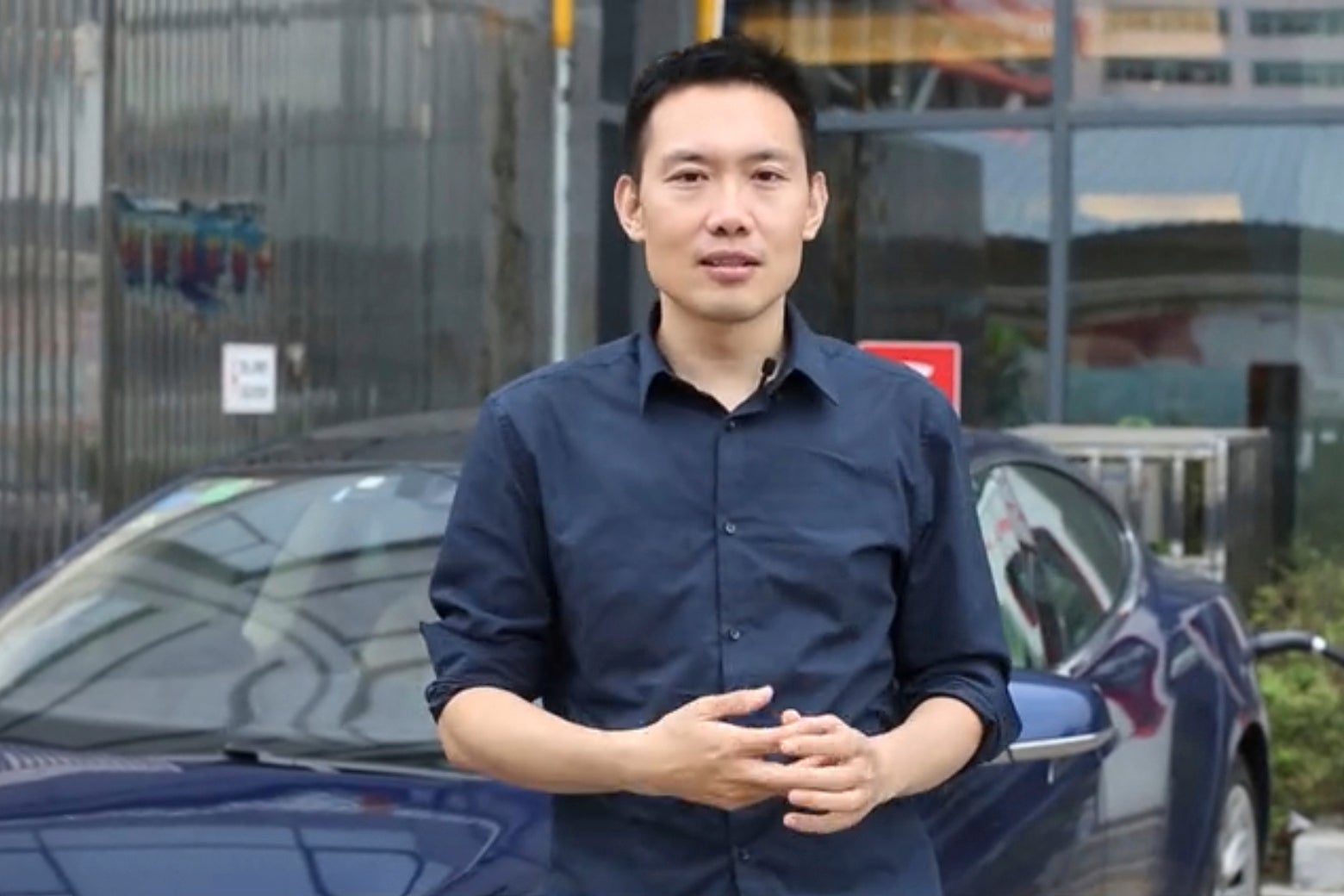
Tesla, however, stands out even among its cut-throat Chinese competitors — in going after car owners who suffered crashes.
“Tesla used their legal advantages to bully Chinese car owners and people who speak up for them,” said Feng Shiming, an auto blogger and Tesla owner who was ordered by a Shanghai court last year to pay Tesla 250,000 yuan ($34,200) after he wrote about Tesla’s alleged brake failures. He has appealed the verdict. “Tesla wants to have a chilling effect on society and terrify people so they will be scared to say anything negative about Tesla.”
Chen Junyi got the message. He lost control of his Model 3 and plowed into a dozen cars in a parking lot at high speed in August 2020. He claimed the brakes had failed. He told Chinese media at the time that he broke his back and four ribs and had to have 30 cm (12 inches) of his small intestine removed. Chen took to social media and warned people not to buy Tesla, raising his shirt to reveal the long, gnarled scar that runs up his abdomen.
Tesla maintained the accident was Chen’s fault, citing a technical review that found the car was accelerating and not braking in the seconds before the crash, and sued him for making false claims.
“Tesla should proactively respond to consumers instead of using its superior resources and filing lawsuits against consumers who are at a disadvantage,” Chen said in a court statement reviewed by AP. “I almost lost my life because of the car accident. I lost my job and income. I am under tremendous economic pressure.”
Chen declined to speak with the AP, citing fear of retaliation. A Chinese court ordered Chen to pay the carmaker 50,000 yuan ($6,800) as compensation — and to issue an apology.
“I deeply regret the serious negative impacts I have had on Tesla and its cars,” he wrote. “I hereby sincerely apologize to Tesla and to the people who were misled by my remarks.”
A month later, he apologized for his apology, saying the words were not his own.
